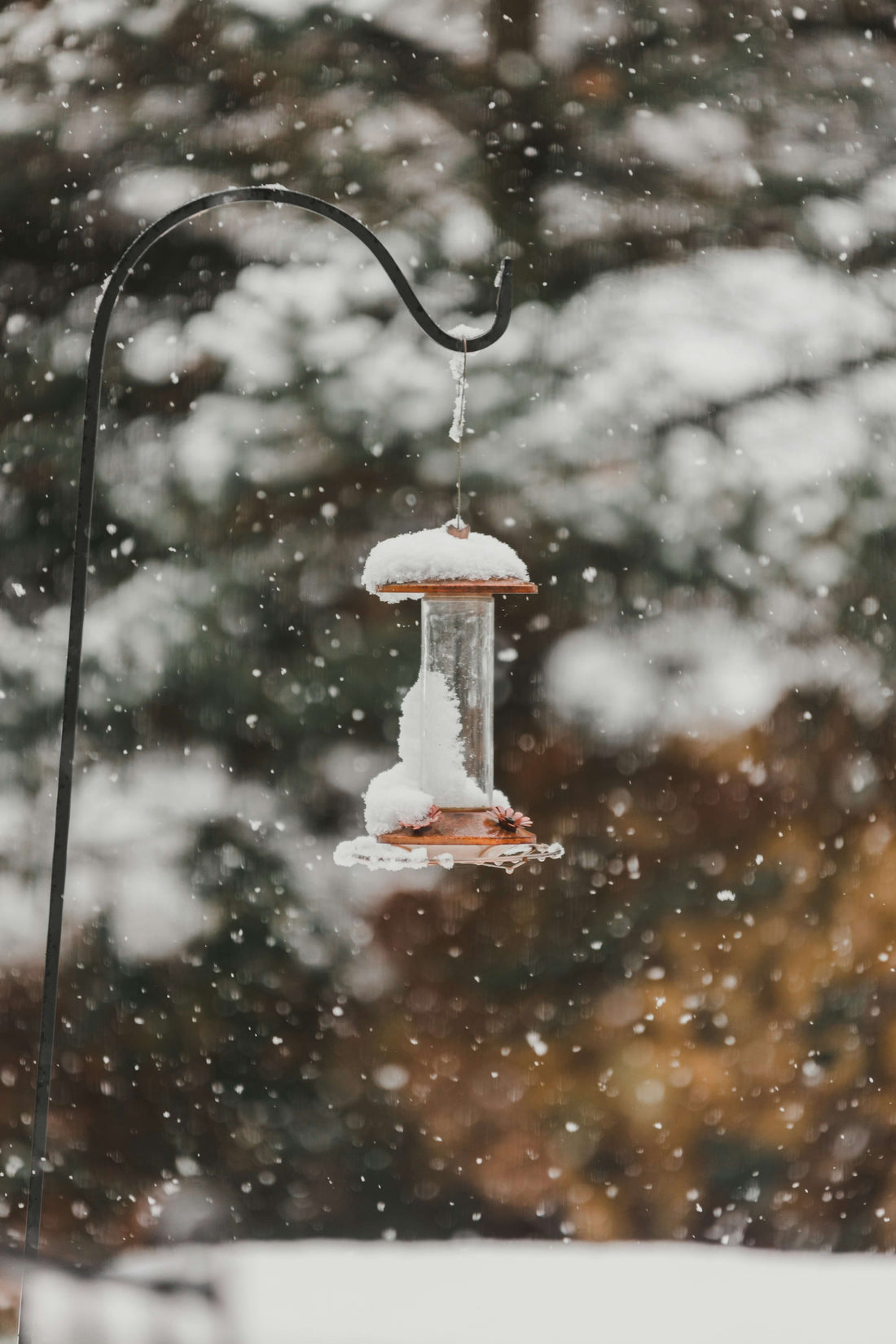
❄️ How to Keep Hummingbird Nectar From Freezing (And Why It Matters More Than You Think)
Share
If you’ve ever woken up to a feeder frozen solid, you know that sinking feeling. Hummingbirds burn energy so fast that even a few hours without nectar can be dangerous—especially at first light after night torpor. The goal in winter isn’t just preventing ice; it’s making sure there’s liquid, high-energy nectar available at dawn.
Why Freezing Nectar Is Such a Problem
At night, hummingbirds enter a mini-hibernation called torpor to survive the cold. When they wake, they need immediate sugar to restart their metabolism. If your feeder is frozen at sunrise, they may not find another source in time—particularly in places like Washington, Oregon, and the northern Sierra where flowers are scarce in winter.
When Does Nectar Freeze?
Standard 4:1 sugar-water typically begins to freeze around 27–29°F (-3 to -2°C), depending on exact ratio and exposure. Freezing can crack glass, separate sugar from water as it thaws, and leave nectar the birds will ignore. “Just bring it in overnight” helps—but the real test is those first cold hours after sunrise.
Practical Ways to Keep Nectar From Freezing
1) Bring the feeder in overnight
When temps dip below 30°F, take feeders in at dusk and rehang them 15–30 minutes before sunrise. A sunrise alarm works wonders.
2) Rotate two feeders
Keep one indoors overnight while the other hangs outside. Swap at dawn for instant, unfrozen nectar.
3) Add gentle heat (safely)
- A 60-watt incandescent bulb placed beneath the feeder (in a clamp light or weather-rated socket).
- A short string of non-LED holiday lights loosely wrapped around the reservoir.
- A low-setting heat lamp positioned several feet away.
Always use outdoor-rated cords. No open flames.
4) Insulate the reservoir
Wrap the bottle with pipe insulation, an old sock, or bubble wrap to slow heat loss. Even light insulation can buy you a couple of hours.
5) Use a slightly stronger mix—carefully
A 3:1 ratio (three parts water, one part sugar) lowers the freezing point compared to 4:1. Don’t go stronger long-term; overly concentrated sugar can dehydrate birds.
FeatherFuel Does the Adjusting for You
Most DIY nectar recipes need constant tweaking when the weather turns cold. At FeatherFuel, we take that work off your plate. Our Winter Nectar is slightly enriched for cold temperatures—giving hummingbirds the extra sugar energy they need at dawn without you having to change ratios or worry about freezing points.
When spring and summer return, our Summer Nectar shifts back to a lighter balance that complements their natural diet of insects and flowers. One less variable for you, and healthier birds year-round.
🐦 Keep Feeders Flowing at Dawn
Cold-morning ready. Seasonally stronger. Resists crystallization.
Morning Routine That Saves Birds
Set a small daily rhythm: rehang fresh nectar 15–30 minutes before sunrise, check for ice formation in the first hour, and keep a backup feeder indoors. This simple routine is often the difference in mid-winter for resident Anna’s hummingbirds in the Pacific Northwest and coastal California.
Related Reading

Quick FAQ
What temperature does nectar freeze?
Standard 4:1 begins to freeze near 27–29°F. A 3:1 mix or a winter formula lowers the freezing point a bit and stays usable longer at dawn.
Should I bring feeders in at night?
Yes—during freezing spells. Rehang 15–30 minutes before sunrise so birds have immediate energy after torpor.
Is a stronger mix safe?
Short-term in winter, a modest increase helps; long-term very strong sugar can dehydrate birds. That’s why we use a seasonally stronger winter formulation and a classic summer balance.
You handle the feeder—We’ll handle the freeze.
Try FeatherFuel Winter Nectar: seasonally stronger for cold mornings, formulated to resist crystallization, and crafted for healthy winter feeding.
Page Cover Photo by Max Burchill on Unsplash